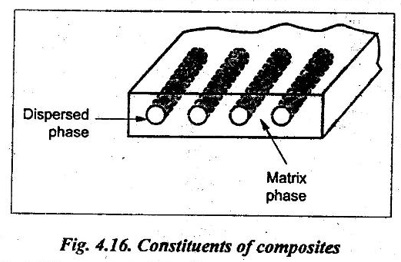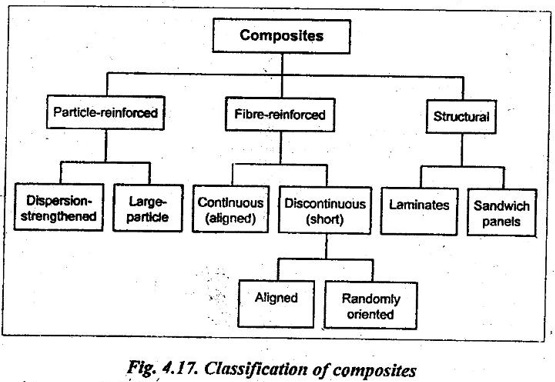There are many situations in engineering where no single material will be suitable to meet a particular design requirement.
COMPOSITES
1. Introduction
There are many situations in engineering where no single material will be suitable to meet a particular design requirement. For example, aerospace applications need materials that should have low densities, high strength and stiffness, good abrasive, impact and corrosion resistance. Such a combination of characteristics are not met by con- ventional metals, alloys, ceramics and polymeric materials. Fre- quently, strong materials are relatively dense; also, increasing the strength or stiffness generally result in a decrease in impact strength.
In such situations, two materials in combination may possess the desired properties, and provide a feasible solution to the materials selection problem. These materials are referred as composites. The term composite can be defined as a material composed of two or more different materials, with the properties of the resultant material being superior to the properties of the individual materials that make up the composite.
Now we shall examine the properties and typical applications of some of the important composites in the following sections.
2. What are Composites?
✓ Composites are produced when two or more materials are joined to give a combination of properties that cannot be attained in the original materials.
✓ In other words, a composite is a combination of two or more materials which are used in combination to rectify a weakness in one material by a strength in another.
✓ Frequently composites are selected to give unusual combinations of stiffness, strength, weight, high-temperature performance, corrosion resistance, hardness, or conductivity.
✓ Examples:
1. A number of composites are found in nature. The common example of a natural composite is wood. Wood is a composite of cellulose and lignin.
2. Some of the artificial (or synthetic) composite materials are cement concrete, fibre glass, bimetallic strip used in thermostats, etc.
3. Constituents of Composites
✓ Composites are composed of two phases. They are:
1. Matrix phase, and
2. Dispersed phase.
✓ The schematic representations of these two phases are shown in Fig.4.16.
✓ The properties of composites are a function of the properties of both the constituent phases, their relative amounts, and the geometry of the dispersed phase.
The geometry of the dispersed phase means the shape of the particles and the particle size, distribution, and orientation.

4. Classification of Composites
A classification scheme for the various composites is shown in Fig.4.17.

Now we shall discuss particle- and fiber-reinforced composites, in detail.
No comments:
Post a Comment